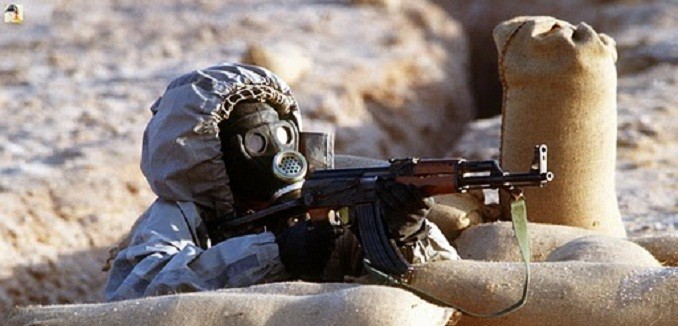As the West gears up for near-certain strikes against
Syrian military infrastructure, analysts are moving to unpack what
might have motivated the Bashar al-Assad regime to unleash what
appears to be the most devastating chemical attack since Saddam
Hussein unleashed
similar weapons against restive Kurds in Halabja in 1988.
On the surface the Syrian regime had no reason to deploy weapons of
mass destruction and risk Western intervention. Recent weeks saw
the Syrian army successfully
rolling back rebels in key cities across. Damascus also
must have known the attack would be detected and publicized. If
nothing else, United Nations investigators had already arrived in
the country to test for previous instances of chemical agents. In
an upcoming edition of The Weekly Standard, Lee Smith quotes Tony
Badran, a research fellow at the Foundation for Defense of
Democracies, on how the regime might
have been calculating:
There’s also a
military logic at work in Assad’s chemical attack last week. For
months, the regime has been shelling these neighborhoods northeast
of Damascus, explains Tony Badran, research fellow at the
Foundation for Defense of Democracies. “But every time the regime
tries to enter—armored units or infantry — they’re repelled by
rebel fighters. Last week’s attacks, and these areas were [also]
subjected to chemical weapons attacks in the spring, are intended
to disrupt rebel defenses.” There’s a strategic purpose, too.
“These neighborhoods are not far from Mt. Qassioun,” says Badran,
“which is the military’s center of gravity. It’s not just a
military base, but also high ground from which the regime can
easily fire on the rebels.” Moreover, Badran explains, “the
neighborhoods attacked last week overlook the Damascus-Homs
highway, which is one of the regime’s main communications lines. A
little further northeast is an airport in Dumayr where the regime
is supplied by direct flights from Iran. Therefore, it’s essential
Assad establish control over this strategic
territory.”
The likely impending Western attack
on Syria may, depending on the extent of strikes, severely
undermine the regime’s ability to wage war. Even in the absence of
Western action, however, Assad was unlikely to ever regain full
control of Syria. Andrew Tabler, a senior fellow at The Washington
Institute, surveyed
the literal and metaphorical landscape last week:
In order for Assad to consider himself the winner
of this conflict, his forces would need to gain control over the 40
percent of Syrian territory, concentrated in the western part of
the country, where 60 to 70 percent of Syrians live… At the same
time, Assad would need to clear out pockets of resistance behind
the regime’s main lines… If Assad achieves all that, he will have
gained a secure hold on his rump state for the indefinite future…
Of course, if Assad manages to stay in power, his level of control
over the country will never again be what it was before the war. In
part, that is because his government’s geographic reach will be
curtailed: Parts of the country (particularly in the northwest and
along the Euphrates River) will remain under the control of the
Syrian opposition — including organized terror groups — even if
they have given up the immediate goal of toppling the Assad
regime.
[Photo: Unknown /
Wikipedia.org]




